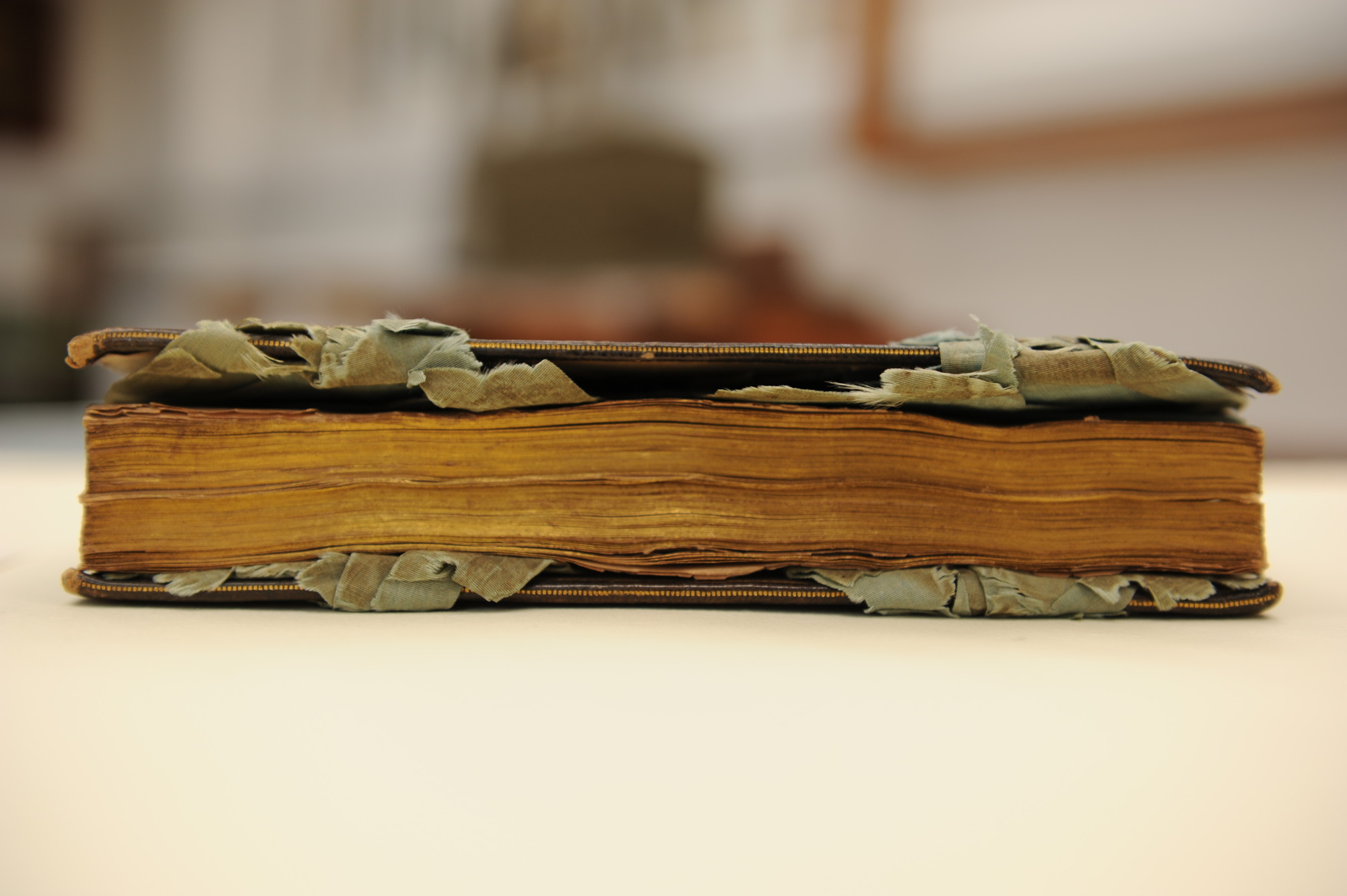
Book conservation: The Eikon Basilike
Study of this book can tell us much about its origins
The history of the book
The Eikon Basilike came into the Royal Collection in 1949 when Bernard C. Reade presented it to Queen Mary, widow of George V and mother of George VI.
Queen Mary was known to collect objects related to the Stuart Royal Family, and Mr Reade wrote that he would be honoured if she would accept his book for her collection.
There are numerous early editions of the Eikon Basilike. This edition was printed at the end of March 1649 by Roger Daniel, probably for John Williams.
The frontispiece
The frontispiece was engraved by William Marshall (active 1617-48) and is only slightly different from the original frontispiece he produced for the first edition.
The chiefly emblematical design was possibly conceived either by Charles I himself before his execution, or by Dr John Gauden (d. 1662), Dean of Bocking in Essex and later Bishop of Exeter, then Worcester, who claimed to be the Eikon Basilike’s author, and who probably had a role in editing it at the very least.
The Order of the Garter
Members of the Order of the Garter at that time were, according to its Statutes, required to wear the insignia at all times.
The badge, known as the ‘Lesser George’, is worn suspended from a light blue ribbon (also known as a riband or sash). It depicts the Order’s patron saint, St George, slaying the dragon and is usually surrounded by the motto of the Order:
‘Honi soit qui mal y pense’ – ‘Shame on him who thinks evil of it’.
In the time of Charles I the ribbon would either be worn around the neck, as can be seen in the van Dyck portrait of the king from three angles (above), or across the chest, as seen in van Dyck’s portrait of Charles on horseback (below).
Charles I had a particular affection for the Order. He developed its symbols and insignia and, fulfilling the Statutes to the last, wore the insignia to his execution.







